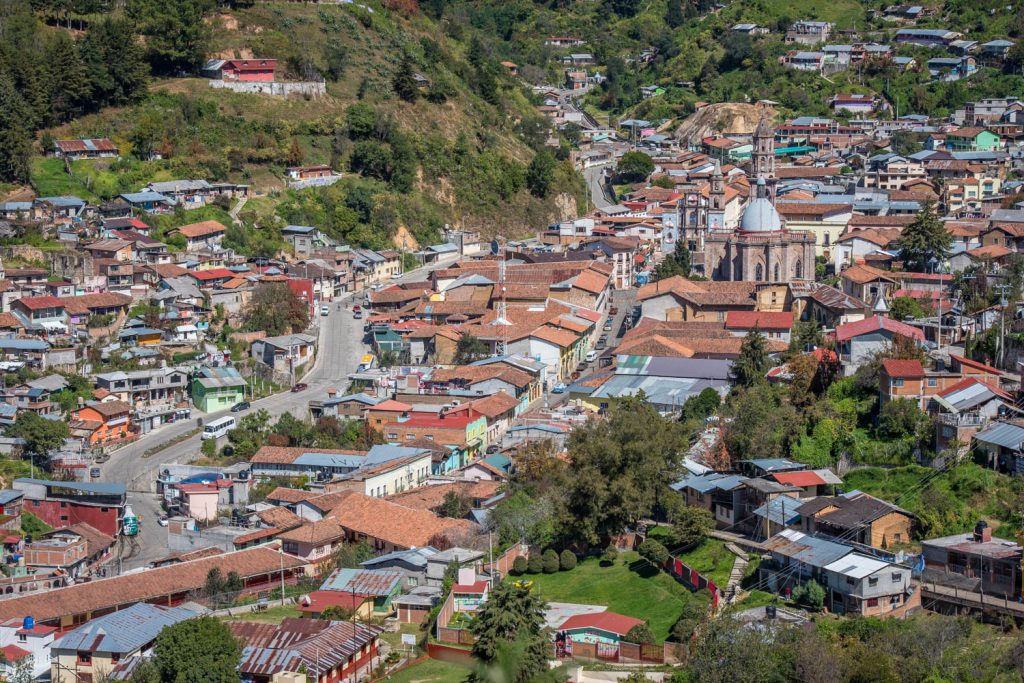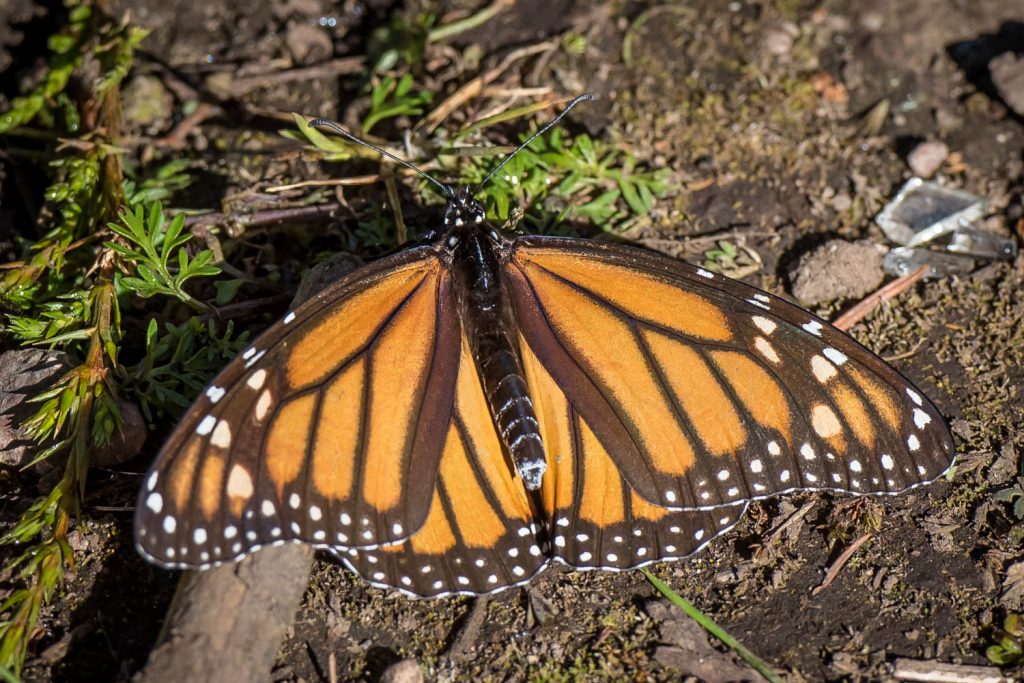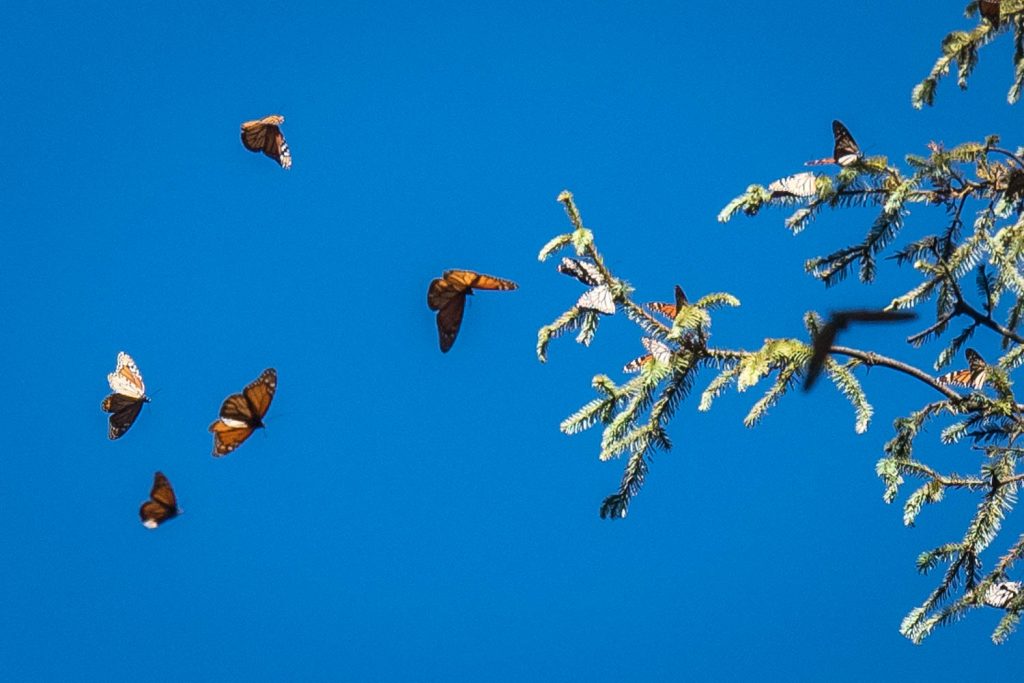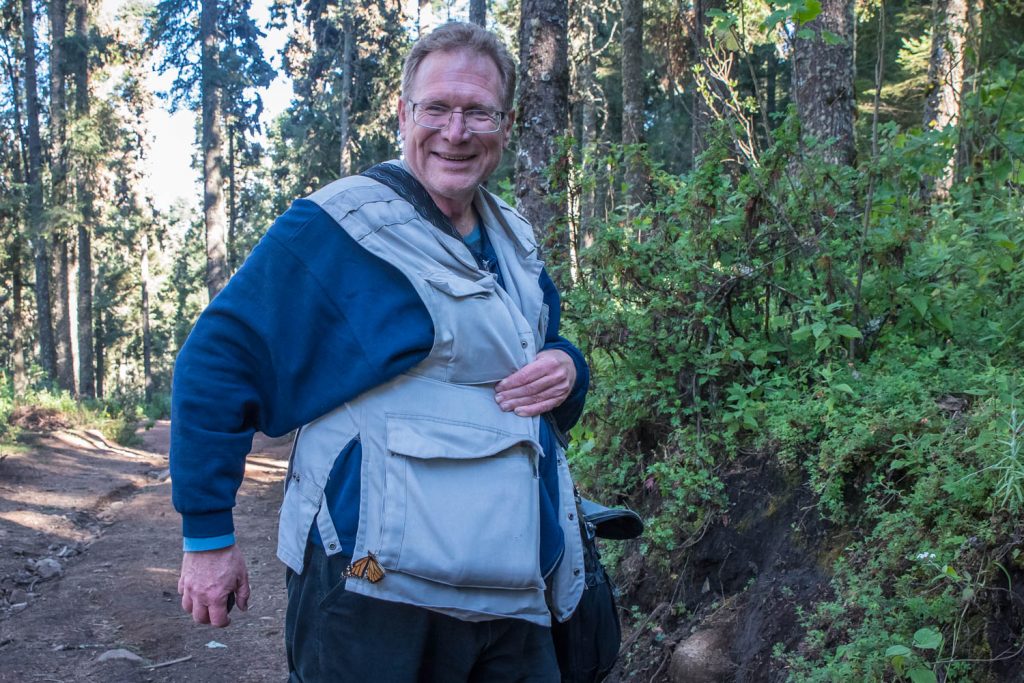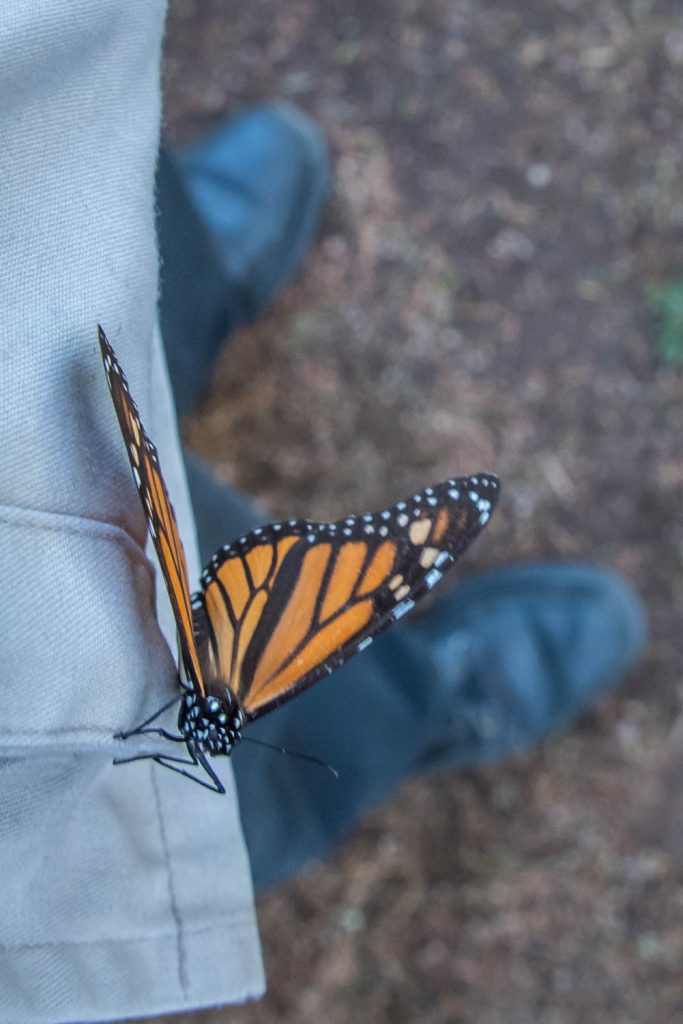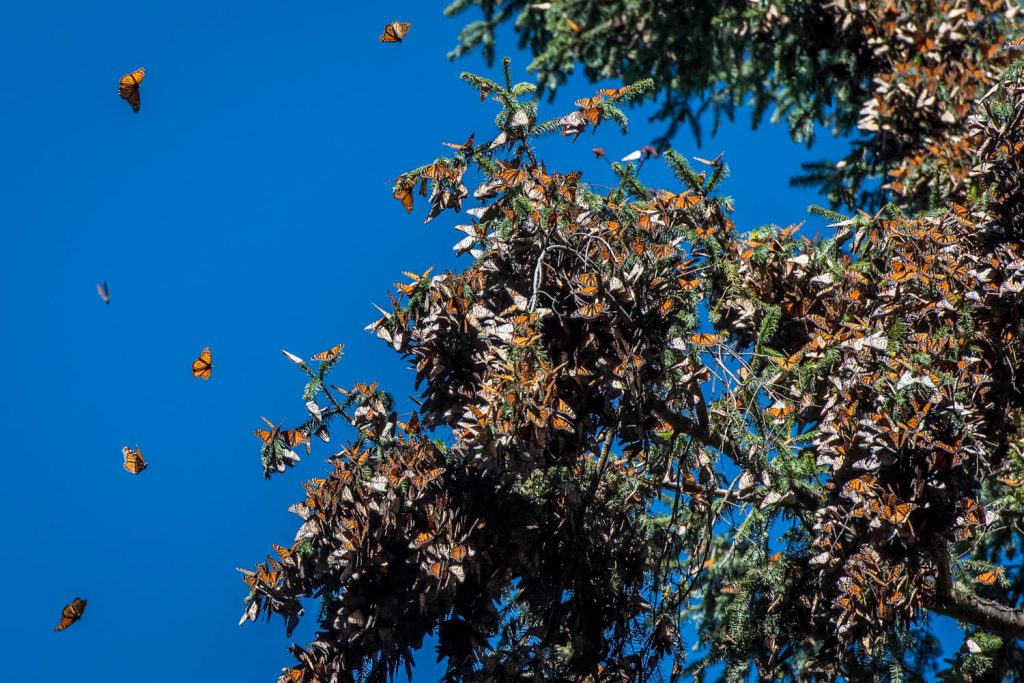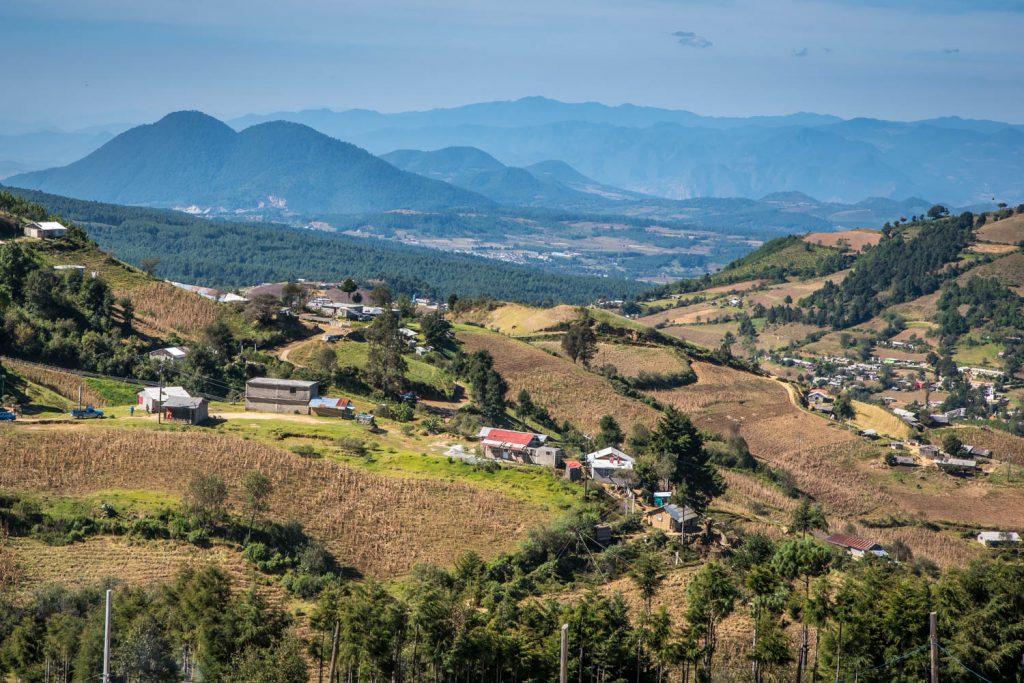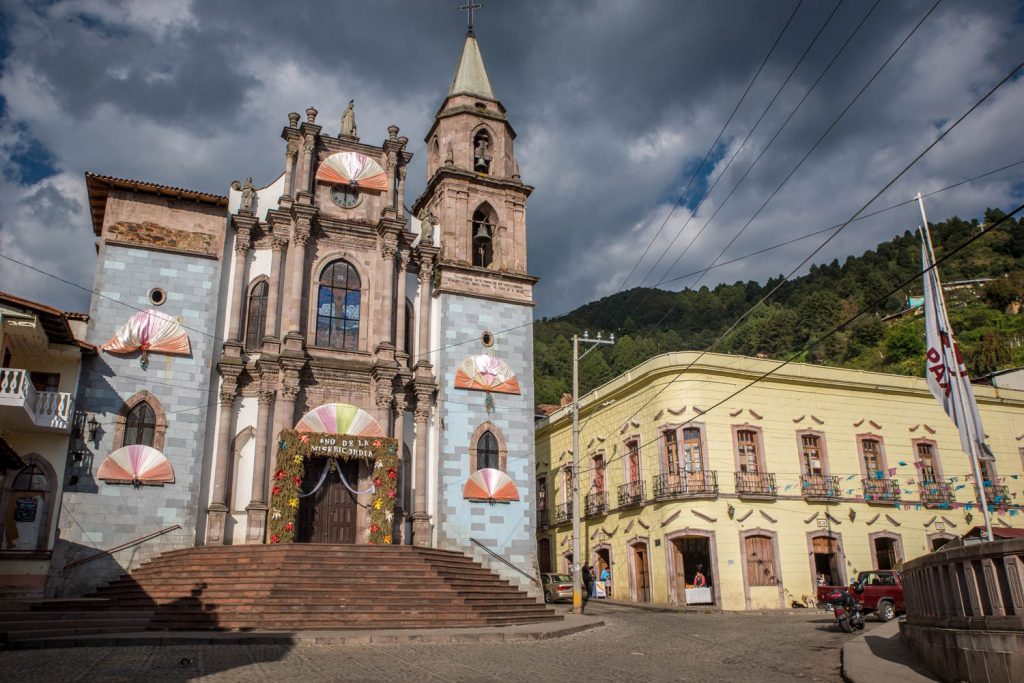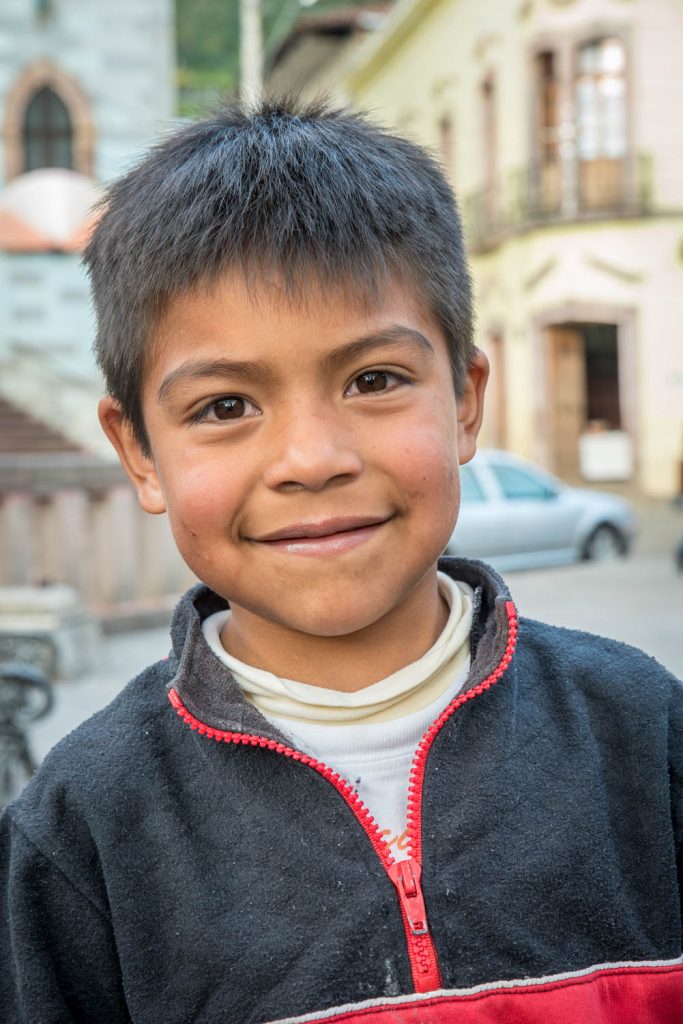
The small town of Angangueo sits high in the Sierra Madre at the eastern edge of the state of Michoacán.
It’s small with a population of just under 5,000 people, roughly the size of Osoyoos in the off-season. The population has fallen greatly since previous decades when the town was known for its silver mining.
Today tourists come here to see one of the natural wonders of the world unfold – the migration of the monarch butterfly.
Every winter, millions of monarch butterflies arrive here to spend their winters on a few mountains in the immediate area. Conditions are perfect for them because the cool temperatures allow them to conserve energy through the winter, and there is the right amount of moisture for them.
It takes several generations of butterfly to complete one year’s migration, yet guided by instinct and their antennae, they know exactly where to return to each winter.
Normally the lifecycle of a monarch butterfly is four to five weeks, and that’s how long they live when they are born in Texas and travel north to Ontario and Québec.
But then, a super generation is born in Canada that actually lives up to seven months and this single butterfly makes the entire migration from Canada to Mexico. Riding the air currents high above the ground, they can travel more than 100 km a day on their migration south.
The phenomenon of their migration was only ultimately proven in the 1970s by a Canadian, Dr. Fred Urquhart, who dedicated 40 years of his life to unraveling the mystery of where the butterflies went in the winter.
Hundreds of volunteers in Canada and the United States put tiny identification stickers onto butterflies, and Urquhart tracked their movements. Finally, in his 70s, he came to this area and was amazed to find among millions of butterflies one that had a sticker that had been put on it in Minnesota, proving that a single butterfly had made the entire migration.
I arrived in Angangueo yesterday afternoon, and made arrangements with a local guide to take me up to El Rosario entrance to the sanctuary.
My guide, German (the Spanish form of Herman, not the nationality), has been guiding people to the sanctuary for about 30 years, and knows a lot about monarchs and their migration. He only spoke a tiny bit of English, so we communicated in Spanish. Our communication wasn’t perfect, but for the most part I understood his sometimes-complex explanations of this phenomenon. After a week in Mexico, my Spanish is coming back quite well.
For the trip into the sanctuary itself, you must use one of the guides provided, and they are there primarily to ensure that you don’t damage the butterflies or get lost on the way. My guide, Brianda, was a friendly young woman who spoke no English, but I found her even easier to understand than German.
The elevation of the sanctuary is around 3,000 metres or roughly 10,000 feet, so the air is quite thin. Although I have been at moderately high elevations since Guanajuato, I haven’t been at 3,000 metres recently, and so I was not well acclimatized. So, the ascent was somewhat difficult and I had to take frequent rests.
As I said to Brianda, she is a youth from the mountains and I am an old man from the lowlands.
The trail got easier, and we entered a meadow where the sun was starting to cast its beams over the vegetation. We started seeing butterflies, both flying in the air and drying themselves out on the ground.
A little higher and through the forest of a type of fir tree, Brianda pointed up to some branches that appeared to be weighted down. Looking closely, I could see that they were completely covered in monarchs, which were well camouflaged.
Where there were branches in the sunlight, many butterflies were fluttering through the air. It was an incredible sight, though I understand that in December and January, they are much more plentiful, and the sound of their wings can actually be quite loud.
I had to watch where I walked to avoid stepping on them. In the peak season, they cover roadways.
It was difficult to photograph them with the lenses I had and once again I craved a 600-mm lens, though I wouldn’t have wanted to carry it up that trail.
It was much easier coming down, and I met up again with German who had been waiting for me. He took me on a short detour to a lookout point over Angangueo on the way back, where I could look out over the rolling hills and mountains, the farm fields, and the town below.
At this point, many butterflies had descended in the warm sun, and they were flying all around. I even saw many back in the town, although the town also is full of wasps.
The temperature here is moderately warm in the day, about 18°C, but at night it falls to about 5°C, and there is no heating. Thankfully my hotel does provide warm blankets, but I still sleep with clothes and a jacket on.
Tomorrow morning I leave for the colonial and heavily indigenous city of Patzcuaro, which I last visited in 2003. I plan to spend three nights there before beginning my return home.
